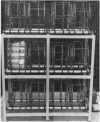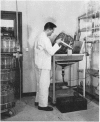Abstract
A stable line of baby hamster kidney cells for use in the production of, and subsequent purification of, foot-and-mouth disease virus (FMDV) was grown in large quantities on the cylindrical surfaces of 2-liter Baxter bottles. The bottles, in round wire cages, were rotated on a three-tiered roller mill. The cells retained their rapid growth characteristics and susceptibility to FMDV in a tris(hydroxymethyl)aminomethane buffer-containing medium which was especially formulated for large-scale work. This medium, without being changed, sustained cell growth for 6 to 7 days to yield confluent layers containing 500 to 750 million cells per bottle. In small-scale virus-growth experiments, harvested fluids contained about 103.8 to 108.8 plaque-forming units (PFU) per ml. This corresponded to a yield of 30 to 50 PFU per cell. In production runs with 190 cultures, the infectious fluids usually contained 107.9 to 109.2 PFU per ml, and the mass of essentially pure virus obtained therefrom ranged from 7 to 17 mg concomitant with cumulative infectivity recoveries of about 20%.
Full text
PDF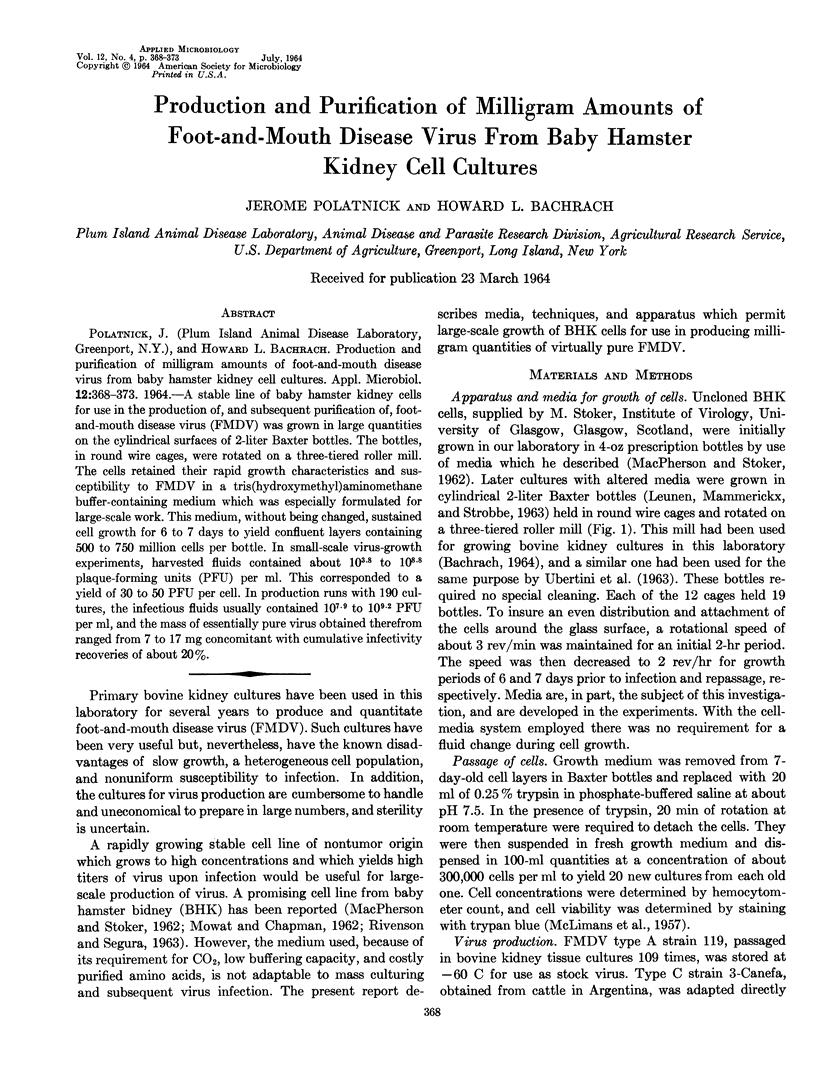
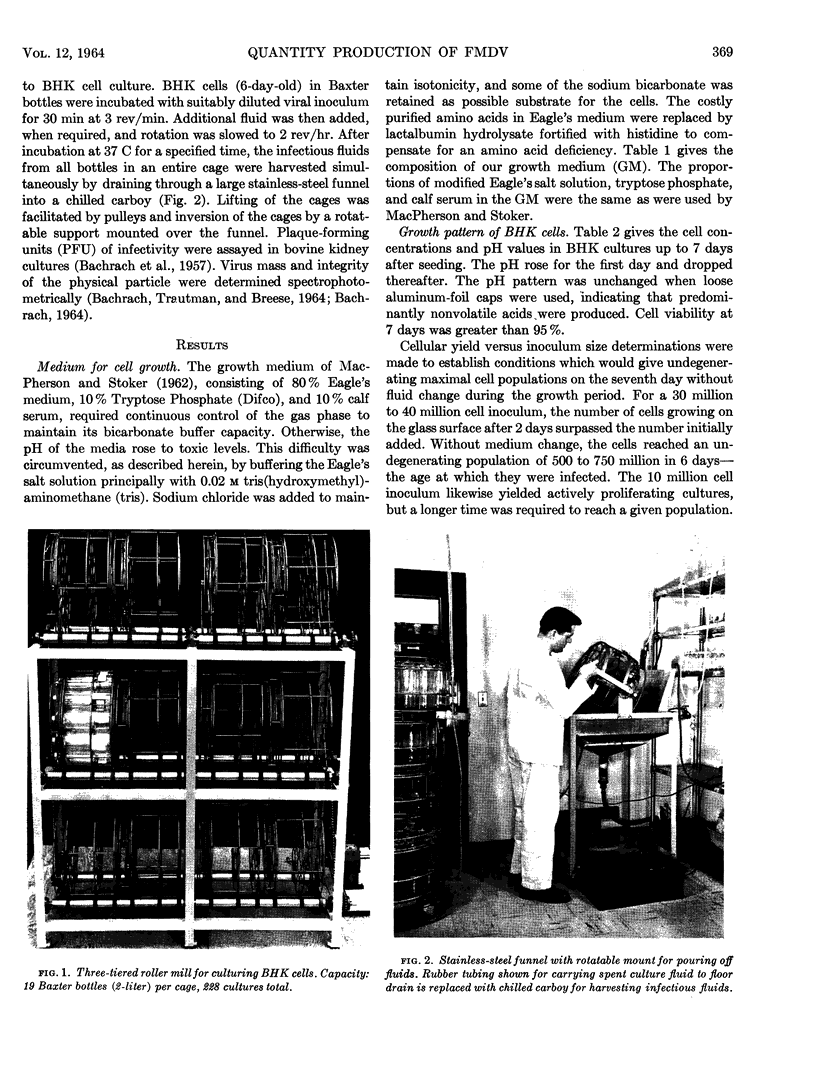
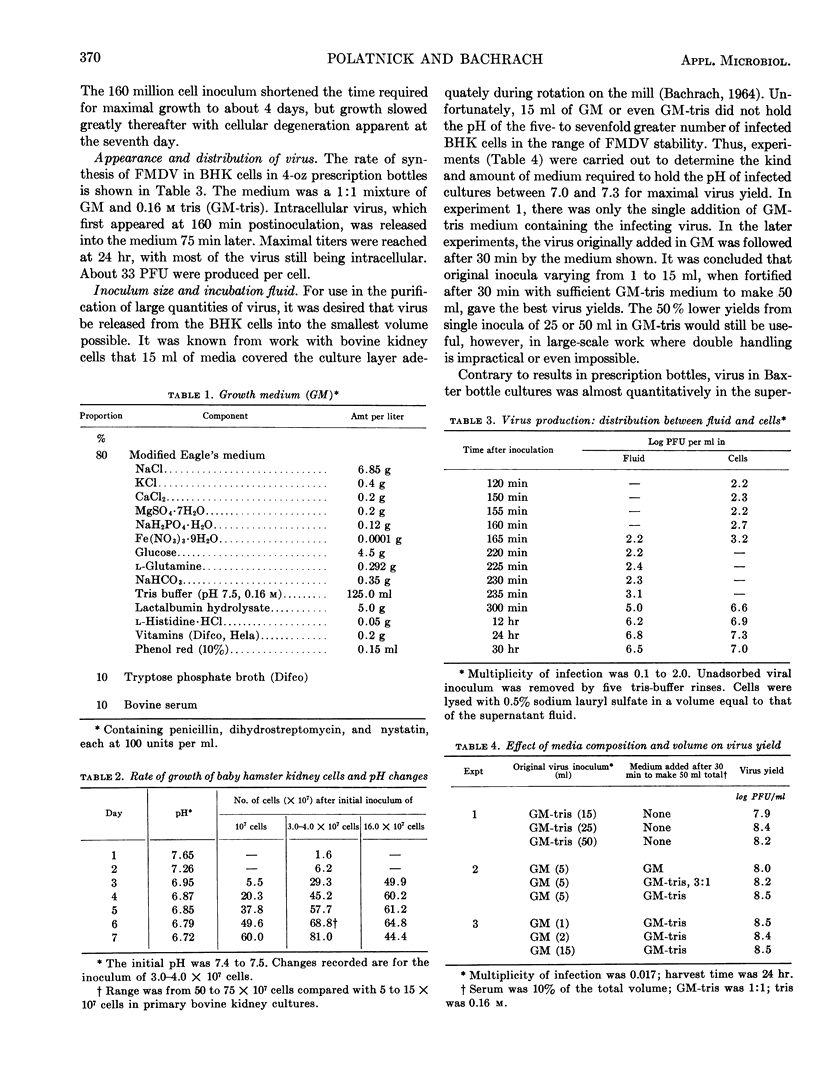
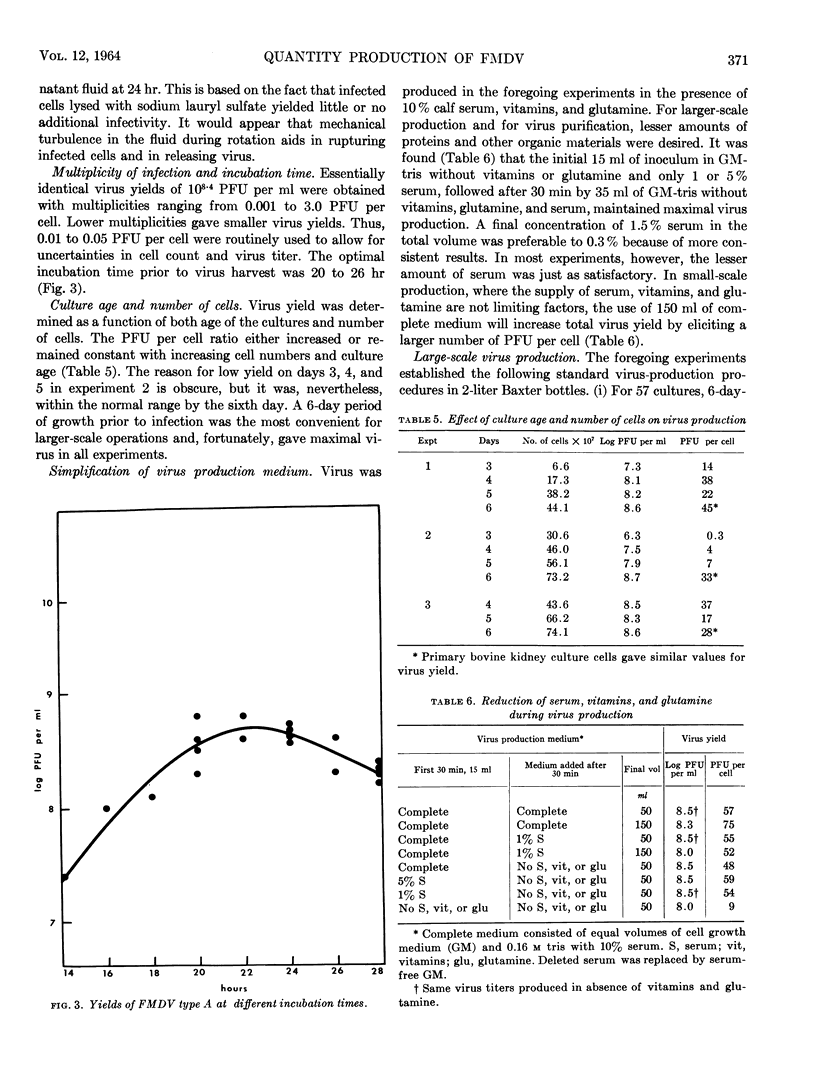
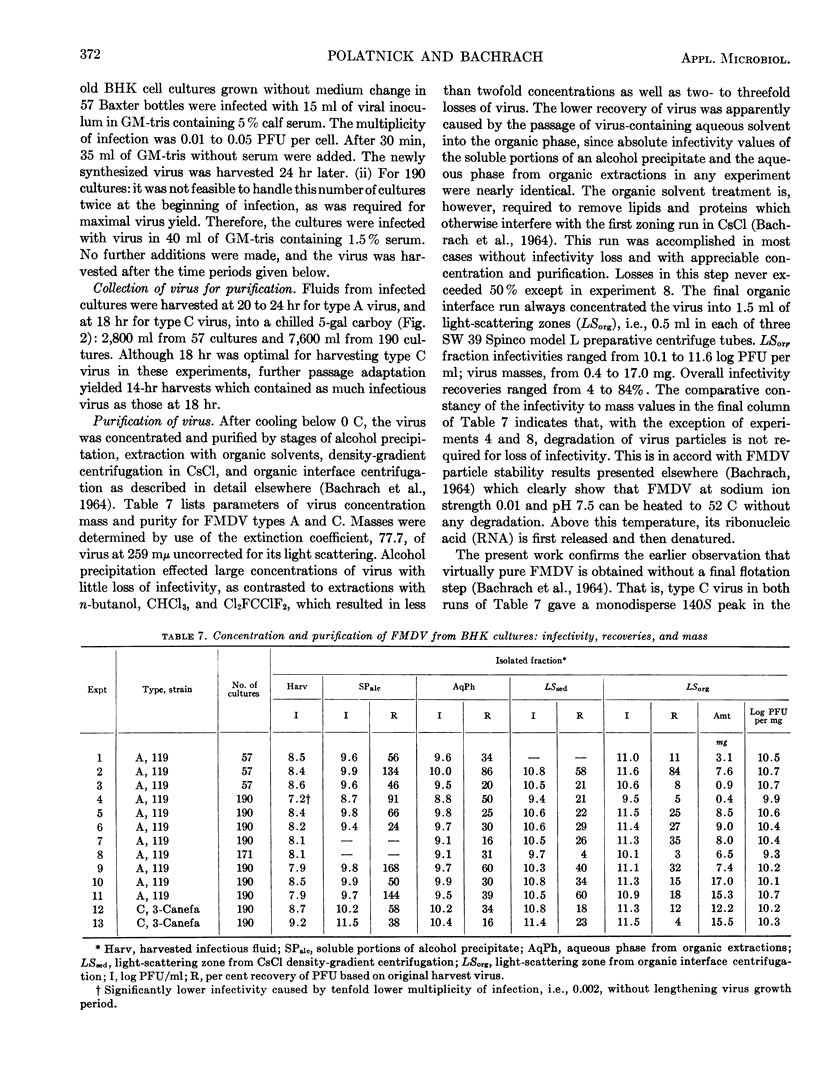
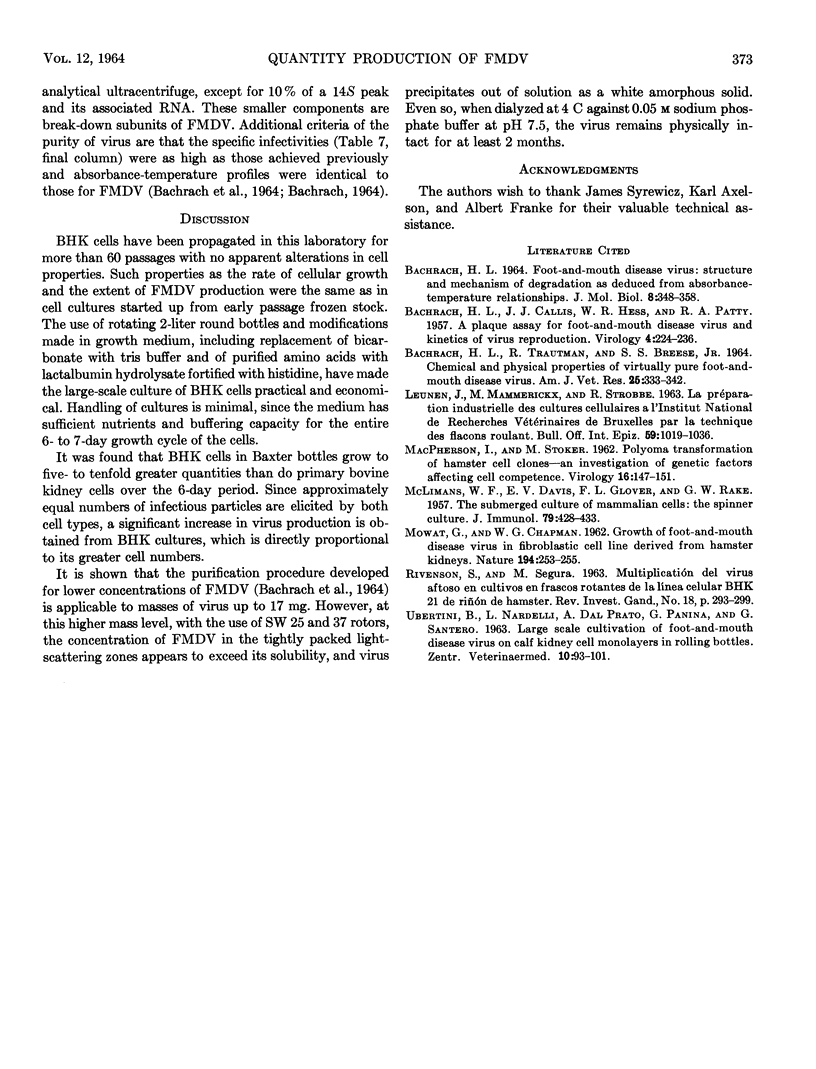
Images in this article
Selected References
These references are in PubMed. This may not be the complete list of references from this article.
- BACHRACH H. L., CALLIS J. J., HESS W. R., PATTY R. E. A plaque assay for foot-and-mouth disease virus and kinetics of virus reproduction. Virology. 1957 Oct;4(2):224–236. doi: 10.1016/0042-6822(57)90060-0. [DOI] [PubMed] [Google Scholar]
- BACHRACH H. L. FOOT-AND-MOUTH DISEASE VIRUS: STRUCTURE AND MECHANISM OF DEGRADATION AS DEDUCED FROM ABSORBANCE-TEMPERATURE RELATIONSHIPS. J Mol Biol. 1964 Mar;8:348–358. doi: 10.1016/s0022-2836(64)80198-4. [DOI] [PubMed] [Google Scholar]
- BACHRACH H. L., TRAUTMAN R., BREESE S. S., Jr CHEMICAL PHYSICAL PROPERTIES OF VIRTUALLY PURE FOOT-AND-MOUTH DISEASE VIRUS. Am J Vet Res. 1964 Mar;25:333–342. [PubMed] [Google Scholar]
- MACPHERSON I., STOKER M. Polyoma transformation of hamster cell clones--an investigation of genetic factors affecting cell competence. Virology. 1962 Feb;16:147–151. doi: 10.1016/0042-6822(62)90290-8. [DOI] [PubMed] [Google Scholar]
- MOWAT G. N., CHAPMAN W. G. Growth of foot-and-mouth disease virus in a fibroblastic cell line derived from hamster kidneys. Nature. 1962 Apr 21;194:253–255. doi: 10.1038/194253a0. [DOI] [PubMed] [Google Scholar]
- McLIMANS W. F., DAVIS E. V., GLOVER F. L., RAKE G. W. The submerged culture of mammalian cells; the spinner culture. J Immunol. 1957 Nov;79(5):428–433. [PubMed] [Google Scholar]



